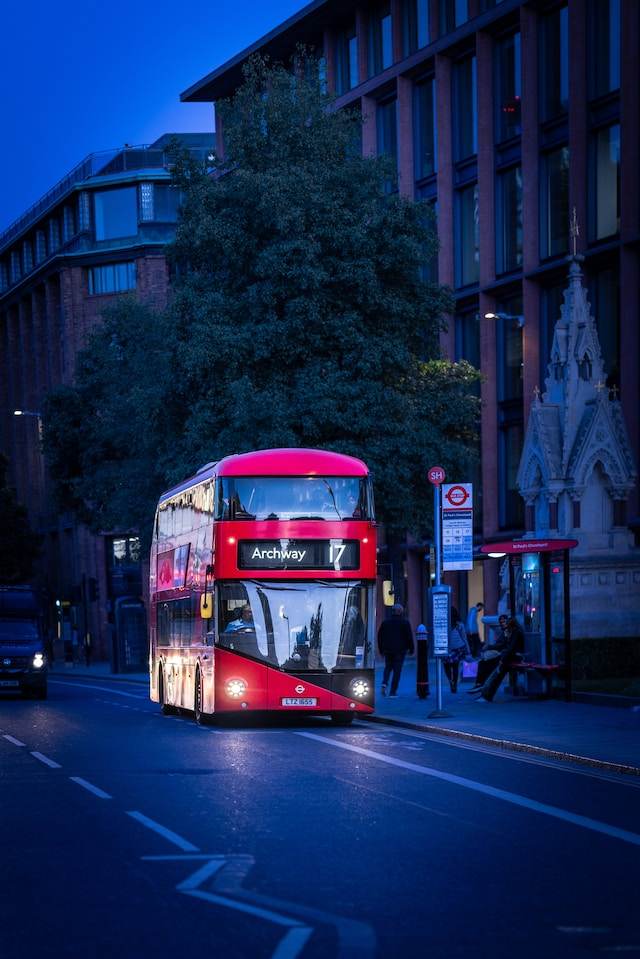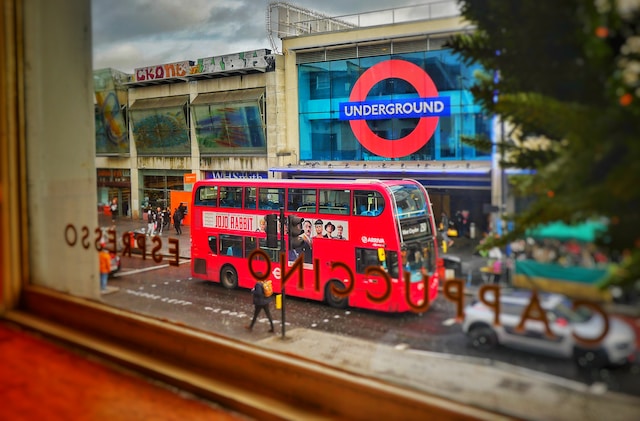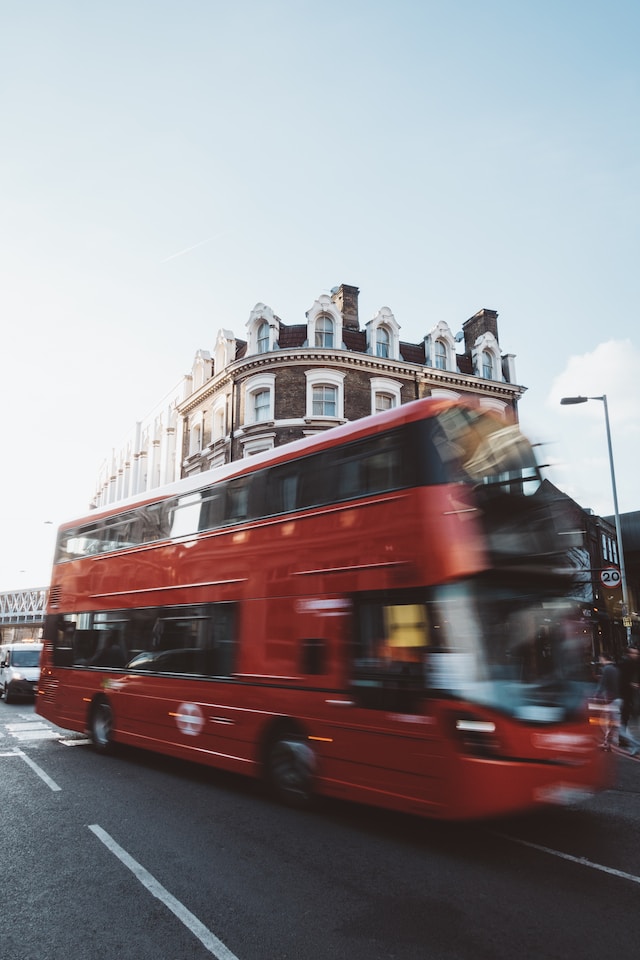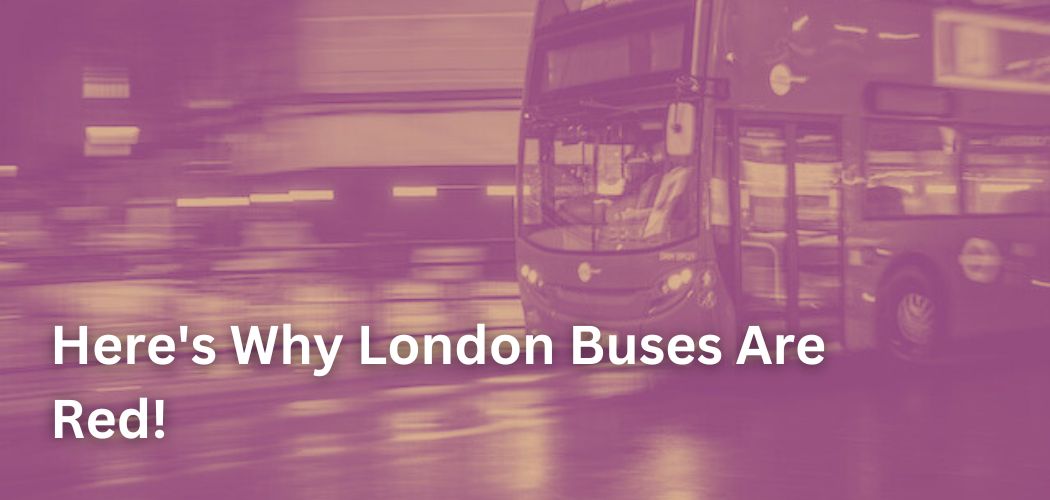The picture of a brilliant red double-decker bus navigating the busy streets of London has cemented its place in popular culture.
These recognizable cars have been an integral part of London’s transportation network for more than a century, winning the hearts of both residents and visitors alike.
But the query “Why are London buses red?” remains. In this article, we will uncover the mysteries of this timeless choice of color, and learn about the historical, cultural, and practical influences that helped to mold the red buses of London into the iconic figures they are today.
Contents
Why Did London Buses Start Being Painted Red?
The decision to paint London buses red was made primarily for historical, functional, and branding reasons.
To give the city’s transportation system a unified character, the London Passenger Transport Board (LPTB) decided to paint the buses red in the 1930s.
- Standardization and Unity
In the 1930s, there was no uniformity in the color schemes used by the different independent companies that ran London’s buses.
Passengers became confused as a result of the lack of standardization, which also resulted in an ineffective transportation system.
These businesses were merged under the London Passenger Transport Board by the introduction of the London Transport Act of 1933.
To promote network unity and efficiency during this consolidation, the LPTB worked to design a uniform and instantly recognizable livery for its buses.
- The Color Red as a Symbol
Red was selected for its symbolic meaning. Red is a striking and commanding color that conveys power, assurance, and authority.

The LPTB wanted to make a strong statement on London’s streets and leave a lasting impact on its people, so they painted the buses a stunning shade of red.
Red was chosen strategically to foster a sense of pride and identification in London’s public transportation system rather than just for its aesthetic appeal.
- Practical Aspects
The red color’s practicality was another important consideration in the decision. The majority of London’s roadways were unpaved in the early 20th century, which led to muddy and dusty conditions.

Due to the continual grit and dirt, dark-colored buses would quickly become unsightly, while lighter colors would more clearly display stains and wear.
Red was a practical decision that allowed the buses to maintain a clean appearance even after hours of service because of its capacity to hide stains and resist fading.
- Branding and Recognition
London’s red buses quickly gained fame as iconic representations of the city. The iconic Route Master, which debuted in the 1950s, strengthened people’s associations between red and London buses.
The entire fleet’s uniform usage of red contributed to branding London’s transportation system and developing a recognizable identity on a global scale.
The city’s residents and visitors alike grew accustomed to seeing the red buses, which helped to give London its reputation as an economically successful city.
- Cultural Significance
Over time, the red buses became an essential component of London’s cultural landscape.
They reflect the history, resiliency, and character of the city and are more than just a means of transportation. As an enduring representation of London, the red buses inspire pride and memories in its citizens.
Are All Buses In London Red?
London buses aren’t all red. In actuality, the rule has a few exceptions.
- Buses that travel outside of London
Outside of London, buses are not mandated to be red. This applies to both buses that travel through London to reach other parts of the nation as well as buses that operate on the city’s outskirts.
- Buses run by private companies
Privately owned buses are exempt from the requirement to be red. To keep the recognizable appearance of the London bus, the majority of private bus companies in London opt to paint their vehicles red.
- Buses are used for specific reasons
Buses utilized for specific purposes may have a varied color paint job. For instance, some tour buses have blue paint, while others have yellow paint.
What Are Some Other Benefits Of Painting Buses Red?
There are various advantages to using the color red for public buses, even if standardization, usability, and branding were the main motivations for painting buses red in London. Here are some other benefits:
- Visibility and Safety
Red is a hue that stands out a lot, especially against cities’ backgrounds and in different lighting circumstances.

Buses’ striking red color makes them visible to other drivers, bikers, and pedestrians, improving road safety and lowering the possibility of accidents.
- Psychological Impact
Red is known to affect people psychologically. It can arouse emotions of excitement, energy, and urgency that might discreetly persuade prospective passengers to board a bus rather than choose another mode of transportation.
- Aesthetic Appeal
Red buses have a charming and vibrant aesthetic appeal that can enhance urban environments.
The aesthetic attractiveness of the cityscape can be improved by the sight of red buses navigating the streets, making it more aesthetically pleasing.
- International Recognition
The red buses of London are well known throughout the world and frequently appear in ads, movies, and television programs.
This exposure strengthens London’s reputation as a legendary international city.

